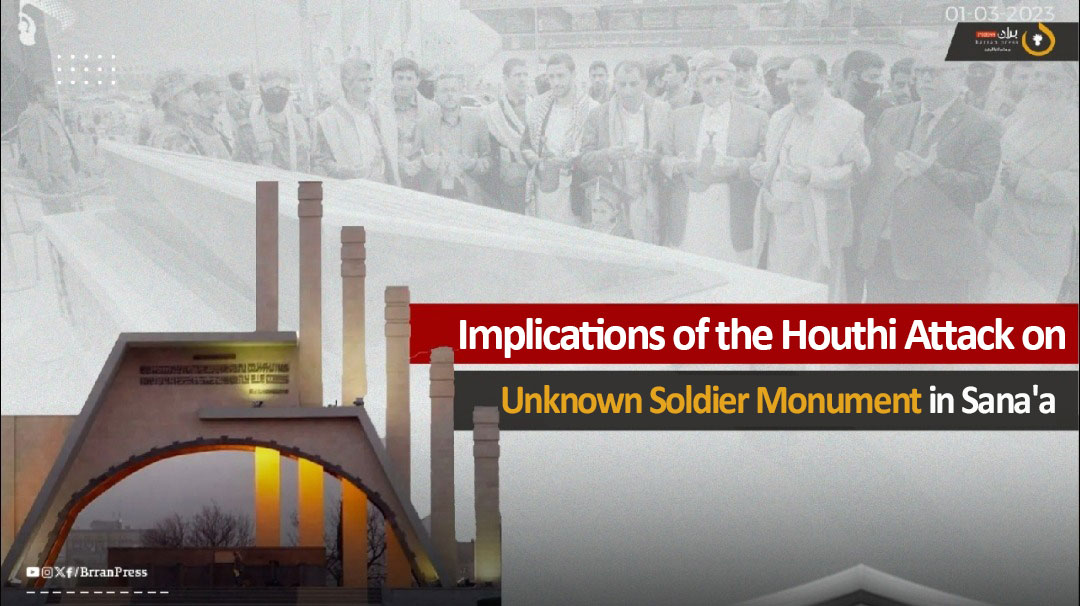


Barran Press
Nearly six decades ago, the Unknown Soldier Monument in the heart of Yemen's capital, Sana'a, stood as a living testament to the heroes of the Yemeni Revolution of September 26, 1962. It commemorates their bravery and sacrifices in the fight for freedom. However, following the Houthi coup and their takeover of Sana'a, this monument has been repurposed, reflecting a troubling shift in its significance.
A Transformation of Meaning
After the Houthis seized control, they began erasing symbols of the Yemeni Revolution, including turning the memorial into a burial site for some of their leaders who died while fighting against Yemenis. On April 28, 2018, the group buried their political council president, Saleh Al-Samad, and his companions beside the Unknown Soldier Monument, displaying their images prominently at the site. This act transformed the monument into a sectarian shrine for Houthi supporters, with the adjacent Sabaeen Square evolving from a venue for national celebrations into a space for Houthi propaganda and recruitment activities.
Insights from Military Officials
Colonel Khaled Al-Qarni, a member of the Joint Operations Command, spoke to Barran Press about the significance of this assault on the monument. He stated that the Houthi attack starkly illustrates the group's agenda, which he claims is rooted in Iranian ideology. Al-Qarni asserted that the Houthis aim for complete control over the Arab region, seeking to impose military, ideological, economic, and political dominance.
He described the Houthi project as one of occupation, targeting the republican system and the historical trajectory of Yemeni society. The colonel emphasized that the group's ideology is based on ethnic and sectarian lines, undermining the principle of equal citizenship. He highlighted that the Houthis have drawn their ideas from outside the rich heritage of Yemen, revealing their political ambitions to seize power and dismantle the institutions established over the past 60 years.
Historical Parallels
Al-Qarni drew parallels between the transformation of the Unknown Soldier Monument and the practices of Iranian-backed armed groups in Iraq, which have constructed sectarian shrines in places like Karbala and Qom. He condemned the act as a blatant affront to one of the key landmarks of the September 26 Revolution, asserting that the Houthis seek to replace Yemen’s national identity with a Persian one, striving for international recognition of a Velayat-e Faqih system in Yemen.
A Call to Action
The colonel asserted that the Houthis' actions invoke a troubling past that disconnects from Yemen's social fabric and its cultural, political, and religious history. He urged all Yemenis to resist this military, ideological, and economic invasion, advocating for a unified effort to reclaim Yemen for all its people. He stressed the need for a functional state that transcends the negatives of both recent and distant history.
Honoring Sacrifices
Regarding the monument, Al-Qarni remarked that it immortalizes the sacrifices of Yemen's freedom fighters who fought against oppressive regimes. He noted that nations worldwide that have fought for liberation have created national symbols to honor the immense sacrifices made in their quests for freedom and independence.
He concluded by asserting that the purpose of such monuments is to keep the memory of these sacrifices alive for future generations, inspiring them to protect their freedoms and pursue the enduring goal of independence.
A Historical Landmark
Inaugurated in 1983 to commemorate the 21st anniversary of the revolution, the Unknown Soldier Monument was constructed in Sabaeen Square, opposite the military parade platform. Military officials describe the monument as a symbol of the revolution's celebration, embodying the sacrifices of the soldiers who fought for freedom.
The monument was designed to be a timeless symbol representing the Yemeni people's struggle against tyranny, resonating deeply with Yemen's national identity. Its construction was overseen by the Engineering Corps and executed by Yemeni professionals, emphasizing local heritage.
Houthi Erasure of History
The Houthi movement has not only targeted the Unknown Soldier Monument but is actively working to erase all remnants of the September 26 Revolution, while simultaneously reviving the symbols of the Imamate regime that the revolution sought to abolish. Military analysts argue that these actions reflect the Houthis' attempts to recreate a past that Yemenis have fought for decades to escape—a past characterized by hunger, ignorance, and disease.
Symbolism of the Monument
The design and structure of the monument hold significant meaning. According to local media reports from previous years, the number 26 is integrated into the architectural design, symbolizing the date of the revolution. It can be read from the rear side of the monument.
The number 26 encases the Quranic verse: “And do not think of those who have been killed in the way of Allah as dead. Rather, they are alive with their Lord, receiving provision.” This verse is inscribed in Kufic script on a basalt stone, harmonizing with the monument's architectural design.
To the north of the number 26, six graduated columns represent the six objectives of the revolution, symbolizing continuous progress and increasing sacrifice. These columns culminate in capitals reminiscent of the columns of Bilqis’ throne, signifying Yemen's rich historical legacy.
To the right of the number, a white stone wall symbolizes the purity of the martyrs' souls, balancing the monument's design against the objectives of the revolution. This structure is akin to a scale, representing both the revolutionary goals and the sacrifices made to achieve them.
The monument features two large arches connecting the numbers 2 and 6, embodying the essence of authentic Yemeni architecture and its historical significance.
At the base, beneath the number 26, lies a platform for laying wreaths, bordered by six smaller stone columns reflecting the larger ones, creating a sacred space for honoring the fallen.
A Place of Reverence
Elevated on a large base, the monument conveys a sense of sanctity and respect for the martyrs, highlighting Yemen's historical significance among world civilizations. Surrounding the monument is the Garden of the Unknown Soldier, stretching approximately one kilometer in length and half a kilometer in width.
The Unknown Soldier Monument serves as a burial site for unidentified soldiers who perished in wars, attracting leaders and public figures during national celebrations, where they lay wreaths in memory of the sacrifices made for Yemen's freedom.